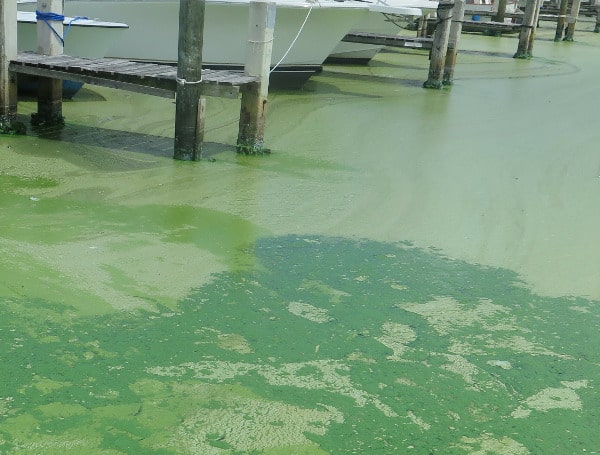Blue-Green Algae (TFP File Photo) POLK COUNTY, Fla. - The Florida Department of Health in Polk County (DOH-Polk) is urging residents and visitors

POLK COUNTY, Fla. – The Florida Department of Health in Polk County (DOH-Polk) is urging residents and visitors to avoid contact with water in Lake Conine near the Lucerne Park Road Boat Ramp and Lake Van at the end of Lake Van Road.
The presence of blue-green algae, which can produce harmful toxins, has been identified in these areas.
What to Do:
- Stay Out of the Water: Avoid swimming, wading, using jet skis or other watercraft, or any activity that involves coming into contact with the water.
- Wash Up Thoroughly: If you accidentally touch the water, wash your skin and clothes with soap and clean water immediately.
- Keep Pets Away: Don’t let pets or livestock near the water. Find an alternative water source for them.
- Don’t Consume Contaminated Water: Boiling the water will not remove toxins. Avoid cooking or cleaning with water from these areas.
- Fish with Caution: If you fish in these lakes, only eat healthy fish fillets. Rinse them thoroughly with clean water, discard the guts, and cook them well. Avoid shellfish altogether.
Read: Tropical Wave: 60% Chance That It Will Develop Into Storm East Of Caribbean This Weekend
What is Blue-Green Algae?
Found commonly in Florida’s freshwater, blue-green algae can rapidly multiply and form blooms. These blooms discolor the water, create floating mats, and often have a foul odor. They can also appear as scum, foam, or paint on the water’s surface in various colors.
Factors like sunshine, warm water, calm conditions, and excess nutrients contribute to algae blooms, which are more frequent in summer and fall. While not all blue-green algae produce toxins, it’s important to be cautious because their presence can’t always be visually confirmed.
How to Stay Informed:
For more information on blue-green algae, including its appearance, visit the Protecting Florida Together website. The Florida Department of Environmental Protection (DEP) also tracks and monitors algae blooms. You can view toxin results from water samples on their Algal Bloom Dashboard.
Help support the Tampa Free Press by making any small donation by clicking here.
Android Users, Click To Download The Tampa Free Press App And Never Miss A Story. Follow Us On Facebook and Twitter. Sign up for our free newsletter.
